Sofirn HS22 Headlamp Review
The Sofirn HS22 headlamp is bright and full featured with a high(ish) CRI flood channel that can ramp between warm and cool, and a spotlight channel! Read on!
Official Specs and Features
Here’s a referral link to the product page on Amazon.com.
Versions
There’s just one version of the Sofirn HS22 headlamp.
Price
The Sofirn HS22 headlamp lists for $58.99, is on sale for $45.99, but can be bought through this Amazon.com referral link for $47.99 with 10% off!
What’s Included
- Sofirn HS22 headlamp
- Sofirn 4000mAh 18650
- Chraging cable
- Headband
- Spare o-rings (2)
- Manual
Package and Manual
Build Quality and Disassembly
Sofirn calls this a “T-shaped” headlamp. The build quality is good.
There’s not a whole lot to disassemble, though. The tailcap (above) comes off (and is labeled).
The back, or barrel, of the body has notches so that when angled in the headband, it’ll stay put.
The threads are anodized and smooth. Loosening the tailcap will mechanically lock out the Sofirn HS22 headlamp.
Both ends have a spring, too, which is nice!
Size and Comps
- Size: 80 mm x 48.52 mm x 26.5 mm
If the flashlight can headstand, I’ll show it here. If it can tailstand, I’ll also show that here!
Here’s the test light with the venerable Convoy S2+. The version below is a custom laser-engraved Convoy S2+ host by GadgetConnections.com. I did a full post on an engraved orange host right here! Or go straight to GadgetConnections.com to buy your Convoy S2+ now!
Also in the photo above, my Standard Reference Material (SRM) flashlight is the Hanko Machine Works Trident, an 18350 light. While I have not reviewed or tested the Gunner Grip version seen here, I have tested a Hanko Machine Works Trident Total Tesseract in brass. I love the Trident, and it’s a striking contrast to the inexpensive Convoy S2+, another great SRM.
Retention and Carry
The Sofirn HS22 can really only be used as a headlamp. There’s no other comfortable way to carry it.
The headband and connection are fine, too.
The Sofirn HS22 headlamp clips in and is easy enough to remove.
Power and Runtime
The Sofirn HS22 headlamp runs on one 18650 cell. Sofirn includes this 4000mAh 18650. It’s a standard cell.
The cell goes into the light button (positive end) first.
Below are a number of runtimes. Output doesn’t seem to hit nearly the claimed levels on any mode. But it’s nice and flat after the stepdown, so maybe that’s a tradeoff you’re willing to accept.
The temperature lines in these charts are included as general context, not precise measurements. The values represent the range (min to max) during testing, but should not be taken as exact readings. Temperature sensors are attached however feasible and not always on the bezel or hottest spot (assuming that can even be clearly defined). Even with ideal placement, too many variables affect temperature to definitively state a specific max value.
Charging
The Sofirn HS22 headlamp charges via USB-C. The port has a press-in cover, as seen below.
Sofirn includes a USB-C to USB-C charging cable.
Charging works just fine, and peaks at around 1.7A – well under 0.5C, which is perfectly acceptable for this 4000mAh cell.
Modes and Currents
| Mode | Mode Claimed Output (lm) | Claimed Runtime | Measured Lumens | Tailcap Amps |
|---|---|---|---|---|
| Turbo – Both | 2500-600-135 | 90s-110m-27m | 1868 (0s) 1769 (30s) |
6.45 |
| High – Both | 600-150-50 | 183m-25m-390m | 446 (0s) 445 (30s) |
0.97 |
| Medium – Both | 200-50 | 8h-6.5h | 150 | 0.29 |
| Low – Both | 50 | 45h | 38 | 0.04 |
| Eco – Both | 5 | 400h | 2.6 | [low] |
| Turbo – Flood | 2000-750-150 | 2m-100m-26m | 1450 (0s) 1430 (30s) |
5.51 |
| High – Flood | 600-150-50 | 183m-25m-390m | 357 (0s) 357 (30s) |
0.84 |
| Medium – Flood | 200-50 | 8h-6.5h | 153 | 0.31 |
| Low – Flood | 50 | 45h | 37 | 0.05 |
| Eco – Flood | 5 | 400h | 2.2 | [low] |
| Turbo – Spot | 1500-600-135 | 2m-120m-30m | 1253 (0s) 1211 (30s) |
4.71 |
| High – Spot | 600-145-50 | 138m-35m-450m | 476 | 1.28 |
| Medium – Spot | 200-50 | 9h-7.5h | 146 | 0.30 |
| Low – Spot | 50 | 45h | 37 | 0.05 |
| Eco – Spot | 5 | 400h | 3 | [low] |
Pulse Width Modulation
Many of the modes to use PWM, but it’s all pretty fast, and I think you’re unlikely to notice it.
Click here to see a “baseline” – a chart with almost no light hitting the sensor.
Then there’s the Ultrafire WF-602C flashlight, which has some of the worst PWM I’ve seen. It’s so bad that I used a post about it to explain PWM! Here are multiple timescales (10ms, 5ms, 2ms, 1ms, 0.5ms, 0.2ms) to make comparing this “worst” PWM light to the test light easier. That post also explains why I didn’t test the WF-602C at the usual 50us scale.
User Interface and Operation
The Sofirn HS22 headlamp uses two e-switches. They’re right on the very top of the light. This image has them upside down, but the “M” switch is for changing the mode, and the other (on the right) is the “brightness switch”.
When the light is in its normal position in the headband and on your head, the brightness switch is on the right hand side, and the mode switch is on the left.
Here’s a user interface table!
| State | Action | Result |
|---|---|---|
| Off | Click Mode or Brightness Switch | On |
| On | Click Mode or Brightness Switch | Off |
| Any | Click Mode or Brightness Switch 2x | Turbo (of current emitter selection) |
| Turbo | Click Mode 2x | Eco (of current emitter selection) |
| Off | Hold Mode or Brightness Switch | Eco |
| On | Hold Mode | Iterate between Flood > Spot> Both |
| On | Hold Brightness Switch | Advance Low > Medium > High |
| On | “2H” (click then click and hold) Brightness Switch | Smooth color temperature tuning for flood emitter. No action for spot emitter. |
| Off | Click either 3x | Lockout (blinks 2x) |
| Lockout | Click any | Blinks 2x to indicate lockout |
| Lockout | Click either 3x | Unlock to previous mode |
LED and Beam
I missed it for the runtime and CCT images, but Sofirn does state what emitters are used here:
1 * SFT-25R 6000-6500K thrower LED,
2 * TN-3535 6000-6500K CRI 70 floody LEDs
2 * TN-3535 2700K CRI 90 floody LEDs
From here down, I’ve tried to be consistent with the photo order. Flood first, then both, then spot. For all flood photos (and “both” photos), this is the default CCT as the light is shipped. Of course, there are many possibilities, since the two flood emitters can be mixed smoothly!
LED Color Report (CRI and CCT)
Sofirn says the flood emitters are high CRI (90), but at the default mix, that doesn’t seem to be true – I measure in the low 80s. Otherwise, there aren’t really any surprises. The spot emitter is cool white and also really flavors the “both” profile, too.
CCT (Correlated Color Temperature) refers to the measurement of the color appearance of light, expressed in Kelvins (K), which indicates whether the light is warm (yellowish) or cool (bluish). A lower CCT (below 3000K) is considered warm light, while a higher CCT (above 5000K) gives cooler, bluish light.
CRI (Color Rendering Index) is a measure of how accurately a light source renders colors in comparison to natural sunlight. Scored on a scale from 0 to 100, higher CRI values indicate that colors appear more true to life and vibrant, similar to how they would look under the sun.
Beamshots
These beamshots always have the following settings: f8, ISO100, 0.3s shutter, and manual 5000K exposure. These photos are taken at floor level, and the beam hits the ceiling around 9 feet away.
Tint vs BLF-348 (KillzoneFlashlights.com 219b version) (affiliate link)
I keep the test flashlight on the left and the BLF-348 reference flashlight on the right. These photos are taken around 18 inches from the door.
I compare everything to the KillzoneFlashlights.com 219b BLF-348 because it’s inexpensive and has the best tint!
Summary and Conclusion
I quite like the tint ramping flood channel option, but I do wish the CRI met the claim of CRI90. The light doesn’t hit anywhere near the claimed output levels, which is disappointing, but at least once it settles, the output is very flat.
The Big Table
| Sofirn HS22 Headlamp | |
|---|---|
| Emitter: | TN-3535 (4) (Flood) and Luminus SFT-25R (Spot) |
| Price in USD at publication time: | $45.99 |
| Cell: | 1×18650 |
| Runtime Graphs | |
| LVP? | Yes |
| Switch Type: | E-Switch |
| Quiescent Current (mA): | ? |
| On-Board Charging? | Yes |
| Charge Port Type: | USB-C |
| Charge Graph | |
| Power off Charge Port | Just one level – probably mid, mode memory (and can’t be changed while charging) |
| Claimed Lumens (lm) | Both: 2500 Flood: 2000 Spot: 1500 |
| Measured Lumens (at 30s) | Both: 1769 (70.8% of claim)^ Flood: 1430 (71.5% of claim)^ Spot: 1211 (80.7% of claim)^ |
| Candela per Lumen | Both: 9.3 Flood: 1.4 Spot: 20.1 |
| Claimed Throw (m) | Both: 230 Flood: 60 Spot: 260 |
| Candela (Calculated) in cd (at 30s) | Both: 672lux @ 5.085m = 17376cd Flood: 242lux @ 4.179m = 4226cd Spot: 693lux @ 6.08m = 25618cd |
| Throw (Calculated) (m) | Both: 263.6 (114.6% of claim)^ Flood: 130.0 (216.7% of claim)^ Spot: 320.1 (123.1% of claim)^ |
| Claimed CCT | Both: – Flood: – Spot: – |
| Measured CCT Range (K) | Both: 5700-6100 Kelvin Flood: 4100-4400 Kelvin Spot: 5700-6600 Kelvin |
| Item provided for review by: | Sofirn |
| All my Sofirn reviews! | |
^ Measurement disclaimer: Testing flashlights is my hobby. I use hobbyist-level equipment for testing, including some I made myself. Try not to get buried in the details of manufacturer specifications versus measurements recorded here; A certain amount of difference (say, 10 or 15%) is perfectly reasonable.
What I like
- Reasonable price for all the features
- Tint ramping flood channel
- Familiar user interface
- Same user interface for any output selection (ie, each emitter or combo has five levels)
What I don’t like
- Doesn’t hit output claims
- Flood channel is not high CRI
Notes
- This content originally appeared at zeroair.org. Please visit there for the best experience!
- Please use my Amazon.com referral link to help support zeroair.org!
- Please support me on Patreon! I deeply appreciate your support!





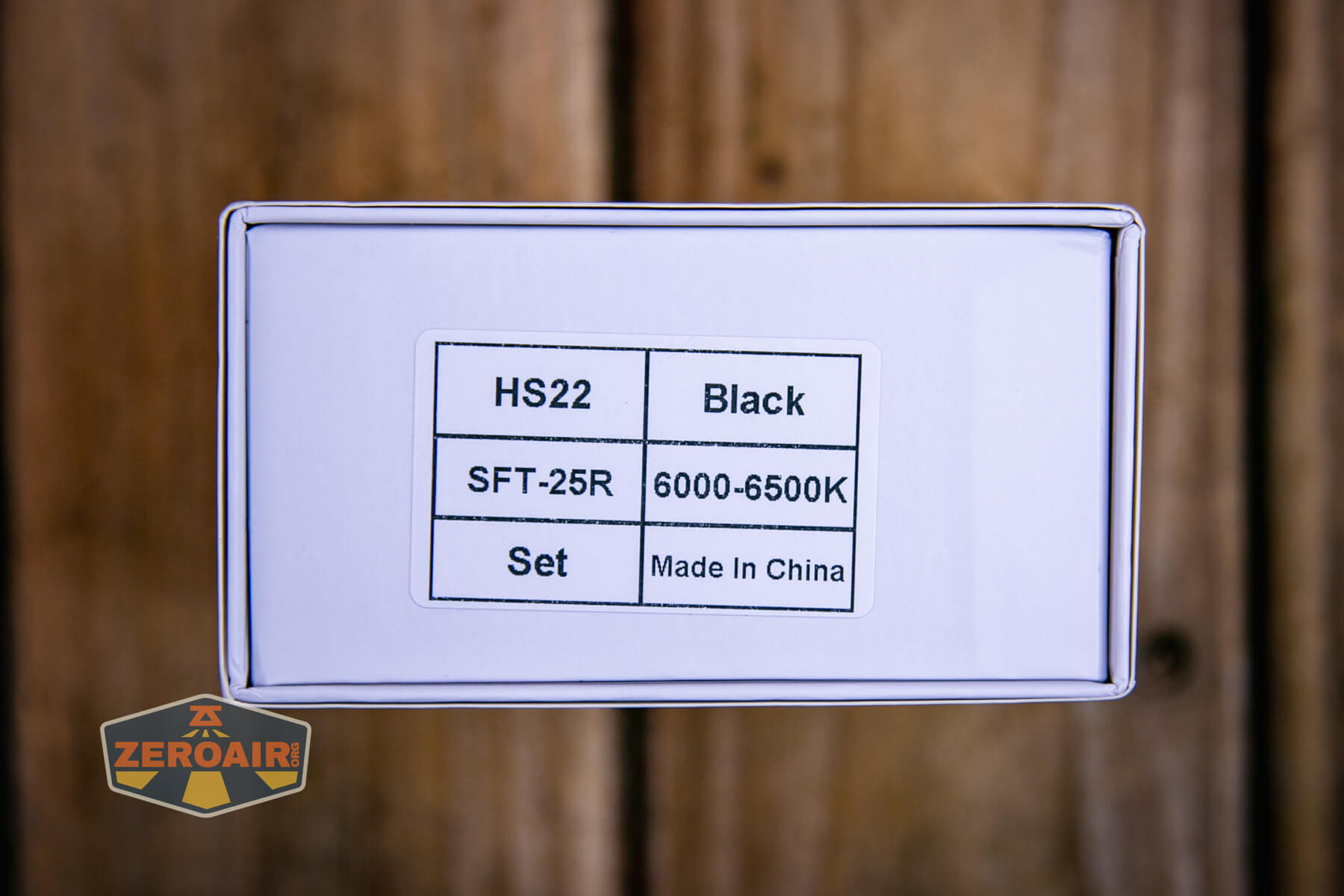





























































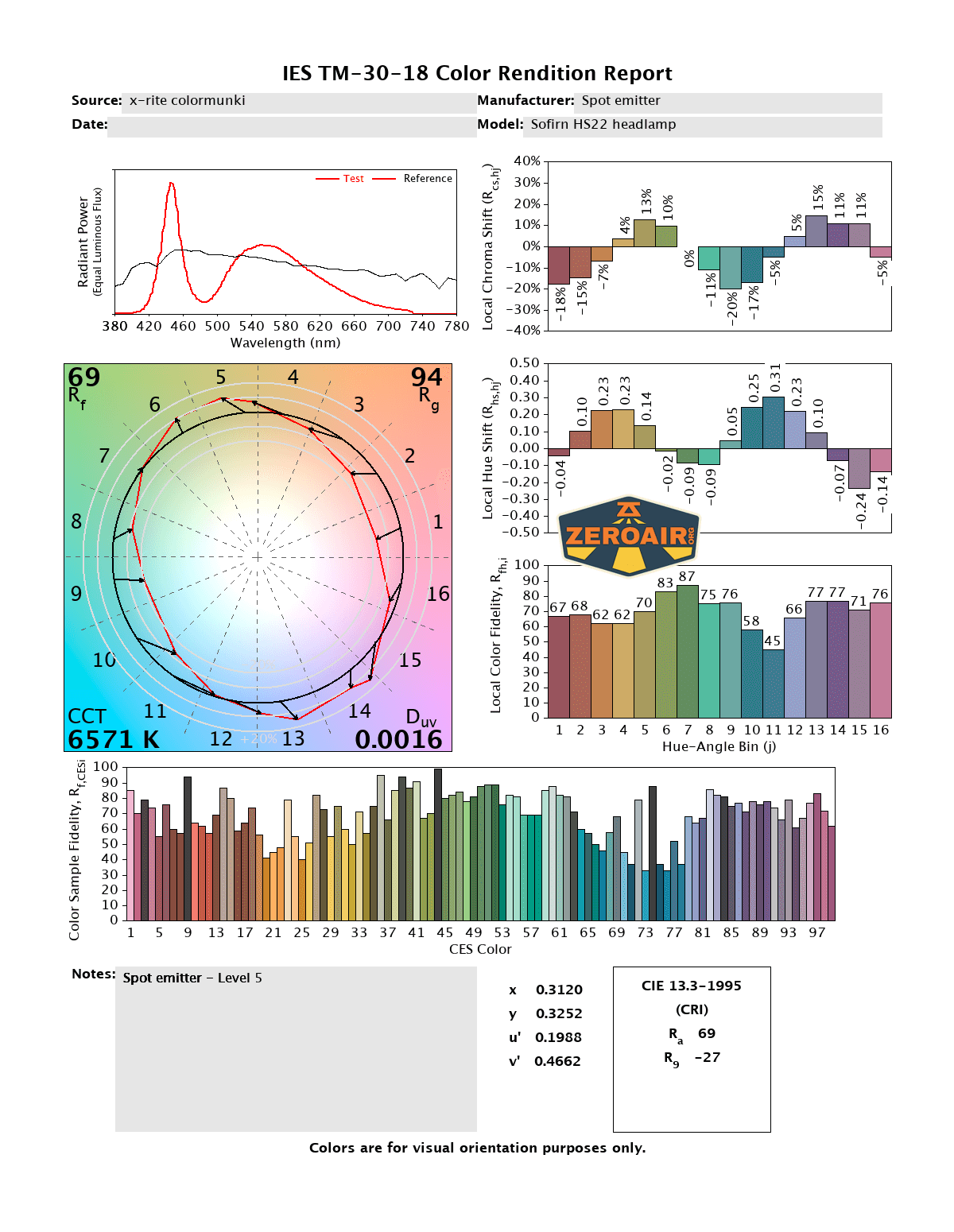


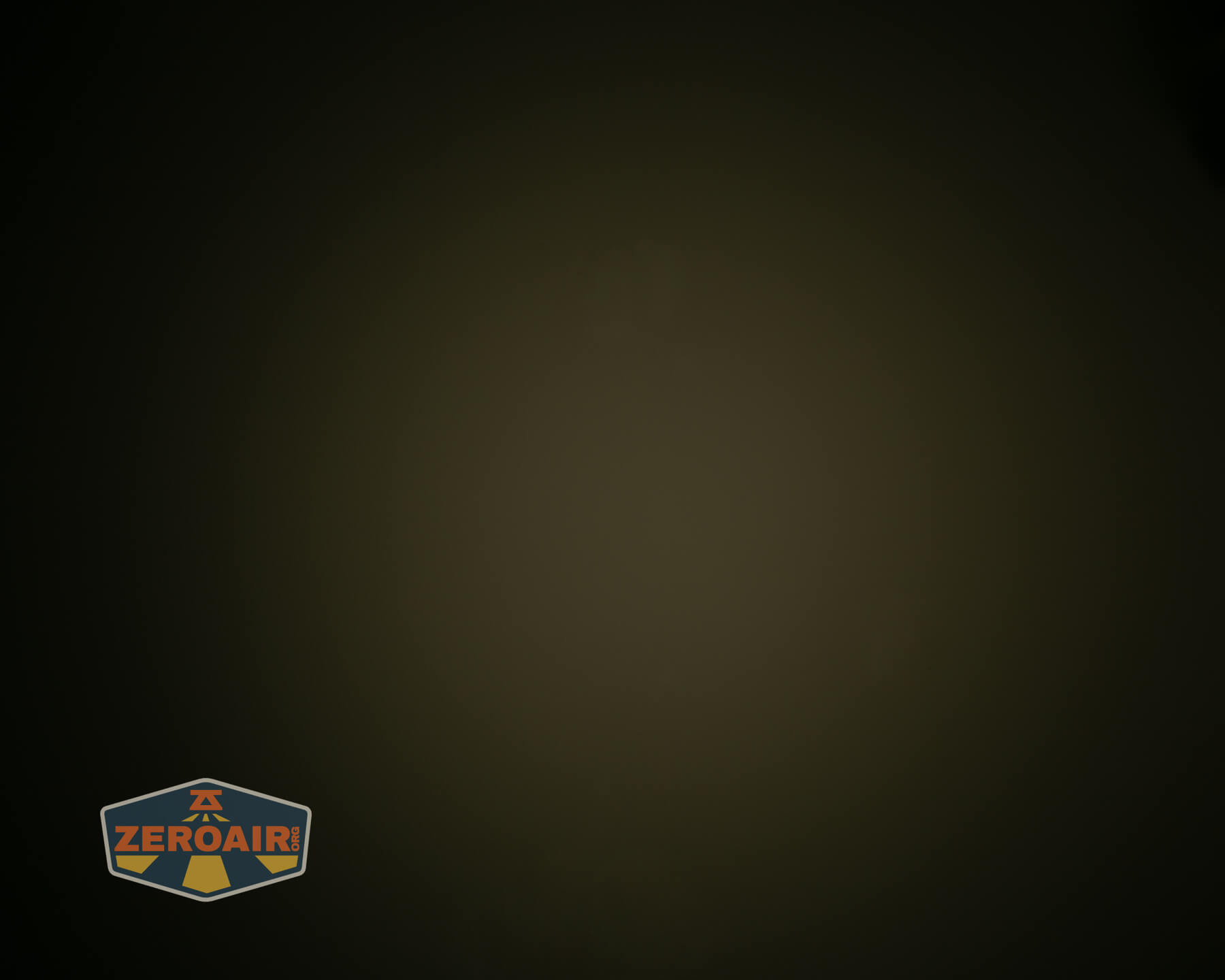








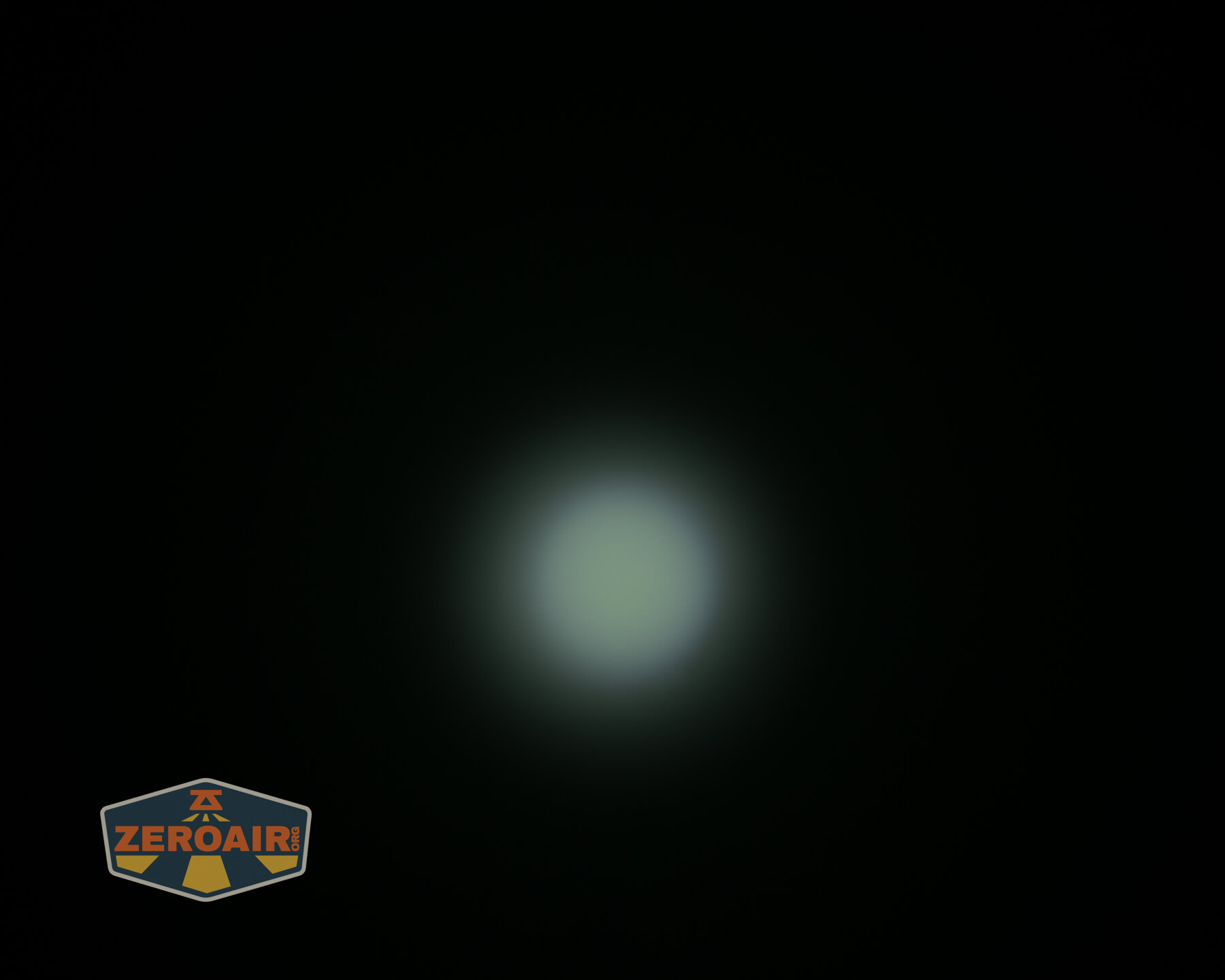



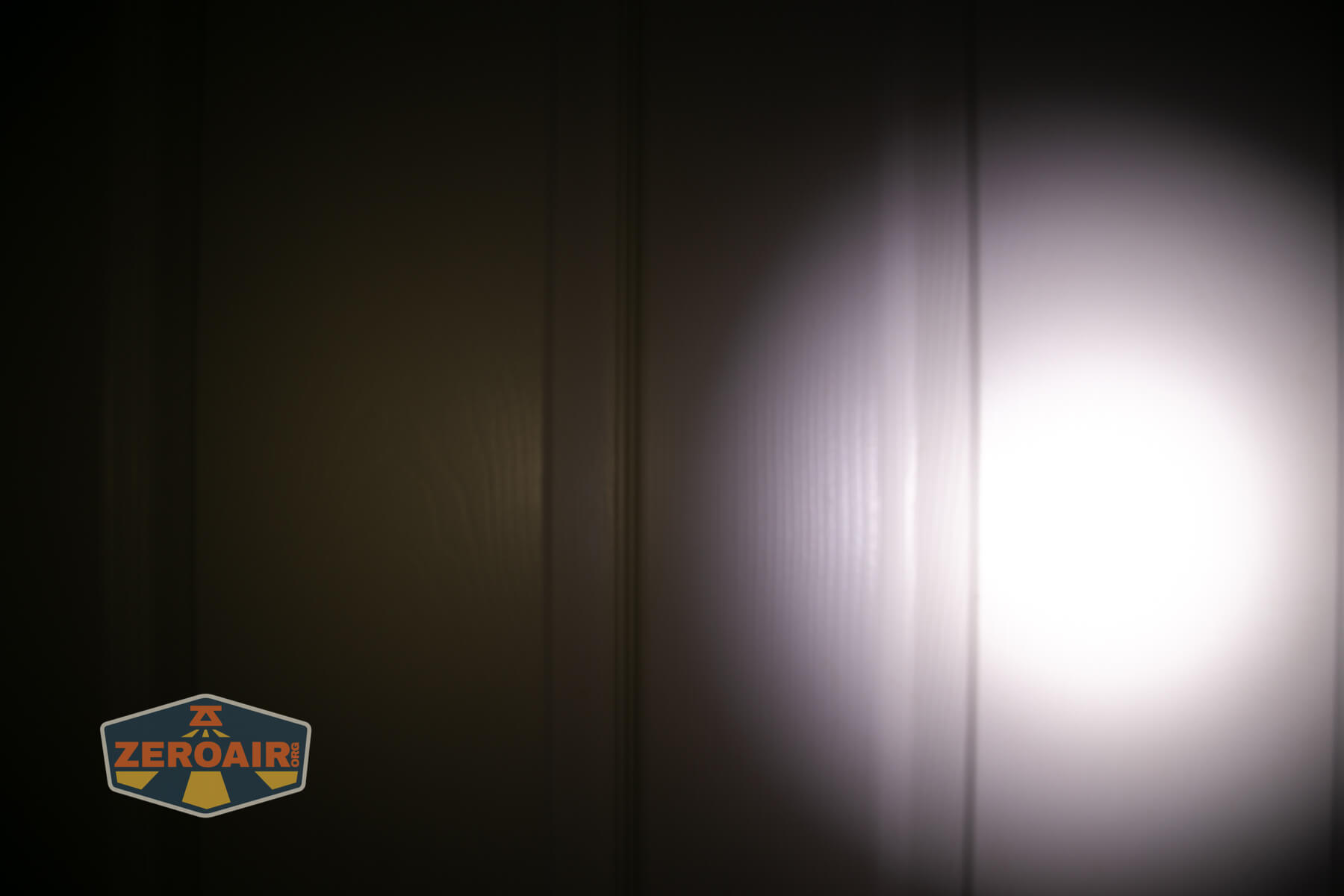





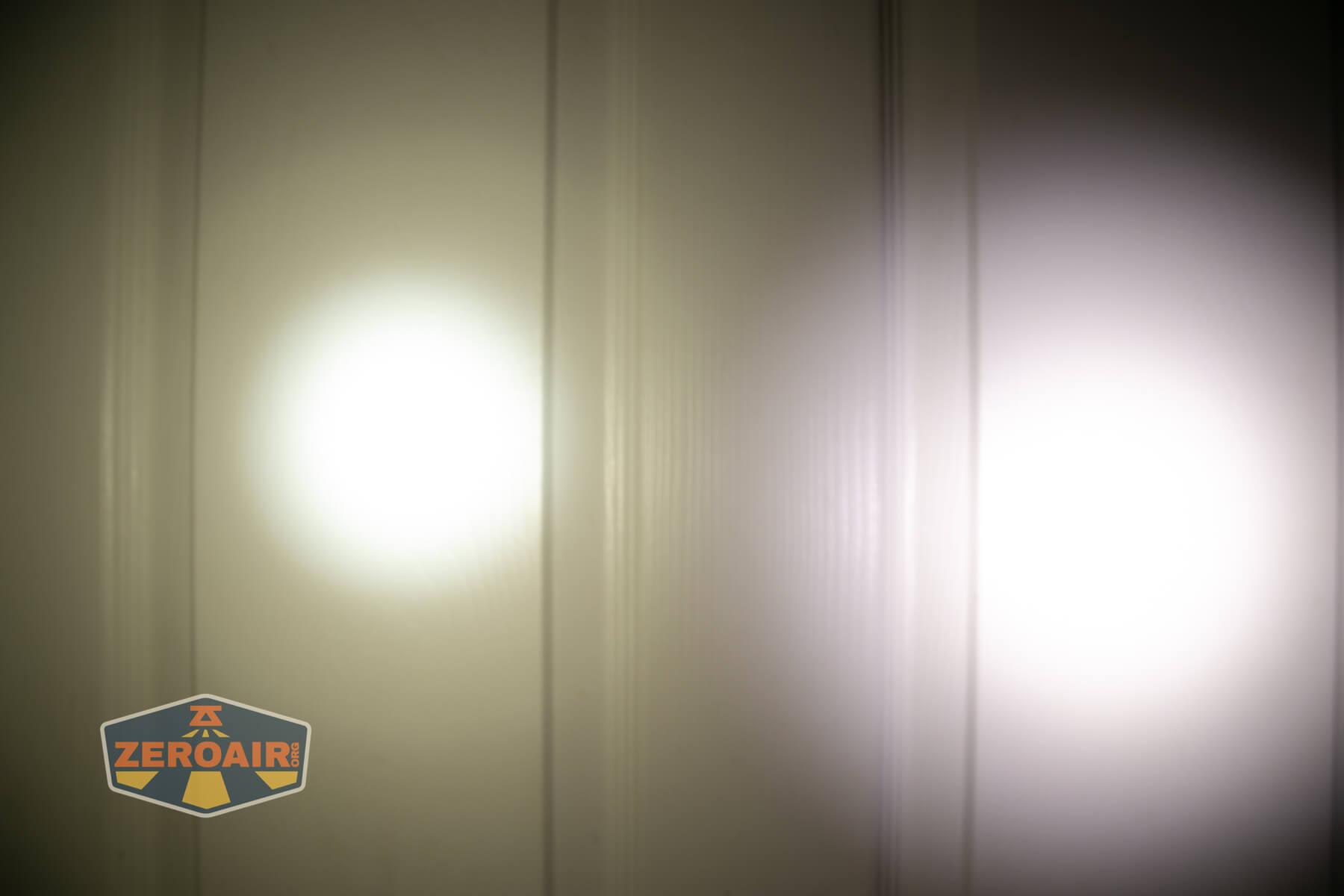
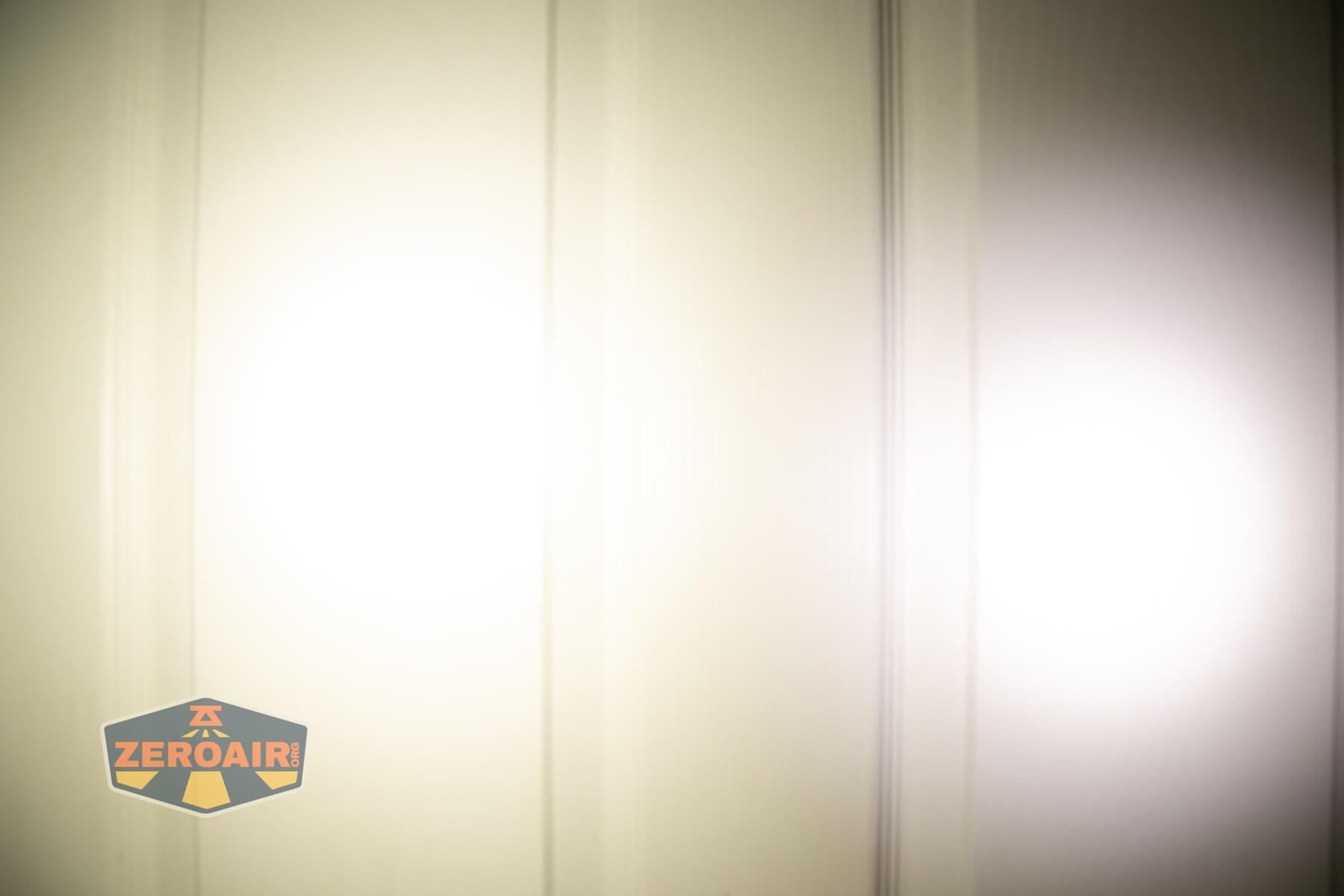







Be careful with the charging. The indicator LED switches to green when passing 400mA and it continues to charge for an hour, at least for my sample. Final voltage is below 4.20V, but if you pulled the cable right after the light went green, the runtime tests might be wrong.